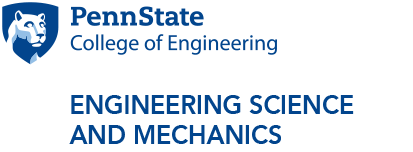Shape programmable 3D mesostructures and functional devices
Abstract: Dynamic shape-morphing soft materials systems are ubiquitous in living organisms; they are also of rapidly increasing relevance to emerging technologies in soft machines, flexible electronics, and smart medicines. Soft matter equipped with responsive components can switch between designed shapes or structures but cannot support the types of dynamic morphing capabilities needed to reproduce natural, continuous processes of interest for many applications. Challenges lie in the development of schemes to reprogram target shapes after fabrication, especially when complexities associated with the operating physics and disturbances from the environment can stop the use of deterministic theoretical models to guide inverse design and control strategies. Here we present a mechanical metasurface constructed from a matrix of filamentary metal traces, driven by reprogrammable, distributed Lorentz forces that follow from the passage of electrical currents in the presence of a static magnetic field. The resulting system demonstrates complex, dynamic morphing capabilities with response times within 0.1s. Implementing an in-situ stereo-imaging feedback strategy with a digitally controlled actuation scheme guided by an optimization algorithm yield surfaces that can follow a self-evolving inverse design to morph into a wide range of three-dimensional target shapes with high precision, including an ability to morph against extrinsic or intrinsic perturbations. These concepts support a data-driven approach to the design of dynamic soft matter, with many unique characteristics.
Biography: Yonggang Huang is the Achenbach Professor of Mechanical Engineering (50%), Civil and Environmental Engineering (50%), and Materials Science and Engineering (0%) at Northwestern University. He is interested in mechanics of stretchable and flexible electronics, and mechanically guided deterministic 3D assembly. He has published 2 books and more than 700 journal papers and book chapters, including 13 in Science and 7 in Nature. He is a member of the US National Academy of Engineering, US National Academy of Sciences, and a fellow of American Academy of Arts and Sciences. He is also a foreign member of the Royal Society (London), Chinese Academy of Sciences, and three other academies in Europe and Canada. He received the Guggenheim Fellowship in 2008 and is a Highly Cited Researcher in Engineering (2009), in Materials Science (since 2014), and in Physics (2018). He has received awards and recognitions for undergraduate teaching and advising from University of Arizona (1993); University of Illinois at Urbana-Champaign (2003-2007); and Northwestern University (2016, 2018, 2020).
Event Contact: Bethany Illig



